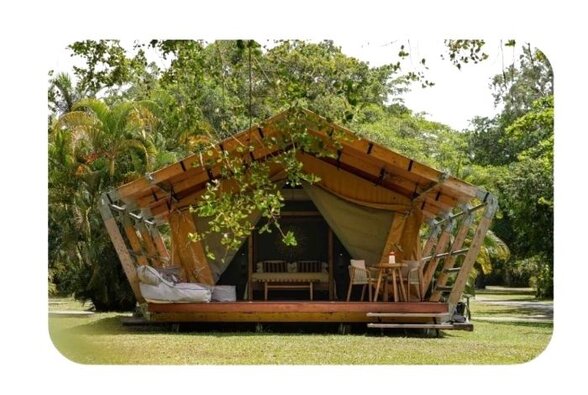What is a good booking conversion rate for Holiday Parks in 2025?
What is the cost of a lost booking to your holiday park?
For many operators, it is not just the revenue from a single stay — it is the commission paid to an online travel agent, the loss of guest data, and the missed opportunity for a repeat customer. According to the Caravan Industry Association of Australia, around 31% of park bookings come from online booking platforms, with average commissions between 13% and 15%, and in some cases as high as 20%.
What makes park guests different
These differences mean that a booking engine designed for hotels rarely meets the needs of a holiday park.
1
Variety of stays
Powered sites, unpowered sites, cabins, glamping tents, and unique accommodation types, all with different amenities and appeal.
2
Location preferences
Some guests want to be near the playground, others prefer a quiet riverside spot, while others want to be close to shared facilities.
3
Group bookings
Families and friends travelling together often want sites next to each other or multiple cabins close by.
4
Seasonality
Demand can surge during school holidays and long weekends, then drop during off-peak periods.
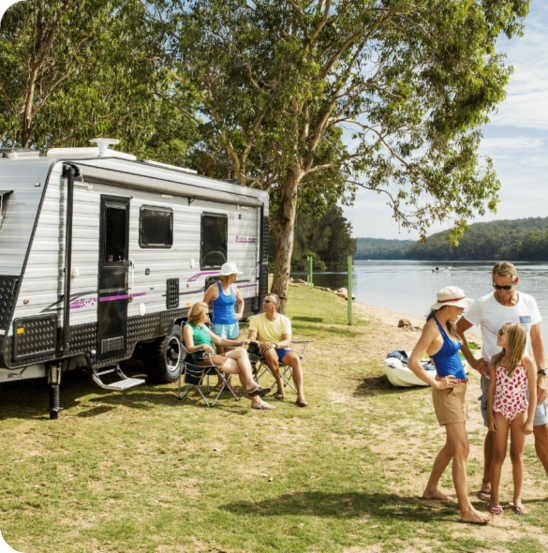
Why conversion rate matters for holiday parks
Your booking conversion rate measures how many of your website visitors actually complete a booking. It is one of the clearest indicators of how effective your online booking experience is.
In 2025, even a small improvement in this number can result in thousands of dollars in additional revenue and fewer commissions paid to online travel agents.
What is a booking conversion rate?
A booking conversion rate is the percentage of people who visit your website and complete a booking. It is a direct measure of how effectively your site turns interested visitors into confirmed guests.
For holiday parks, it is not just a number. It reflects how well your online experience matches what your guests are looking for.
A higher rate means your booking process is quick, intuitive, and trustworthy. A low rate suggests visitors may be abandoning due to confusion, lack of trust signals, or difficulty finding the right site or cabin.
How do I calculate my holiday park’s conversion rate?
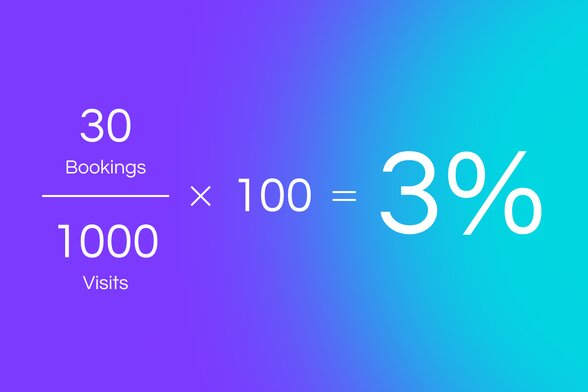
The formula is simple:
(Total website bookings ÷ Total website visitors) × 100
Example:
If 1,000 people visit your holiday park website in a month and 30 of them make a booking, your conversion rate is: (30 ÷ 1000) × 100 = 3%
You should track this figure every month as part of your regular website performance review. Break it down by device type (desktop versus mobile) and by traffic source (organic, paid, referral) to identify where drop-offs occur.
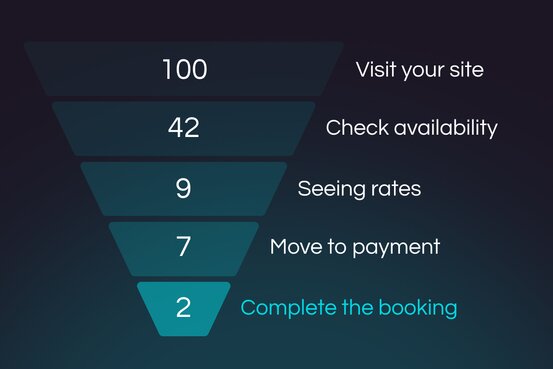
To better understand where guests abandon the process, consider this simplified booking funnel based on average park site behaviour:
- 42 check availability
- 9 continue after seeing rates
- 7 move to payment
- 2 complete the booking (2% booking conversion rate)
Even modest improvements at each stage of this funnel can have a significant impact on your overall conversion rate.
What’s the average accommodation booking conversion rate?
After researching and talking to many holiday park owners, we have found that the average holiday park booking conversion rate is below 2%. That means that out of every 100 people who visit a website, only one or two are likely to complete a booking.
It is important to note that most benchmarks do not factor in cancellations, which can make performance look stronger than it is.
Conversion rates can also vary depending on the type of park, location, and how users interact with the site. Parks with fast, intuitive mobile booking experiences often outperform competitors. Parks with lower average daily rates often achieve higher conversion than those with premium pricing, which may attract more browsing than booking.
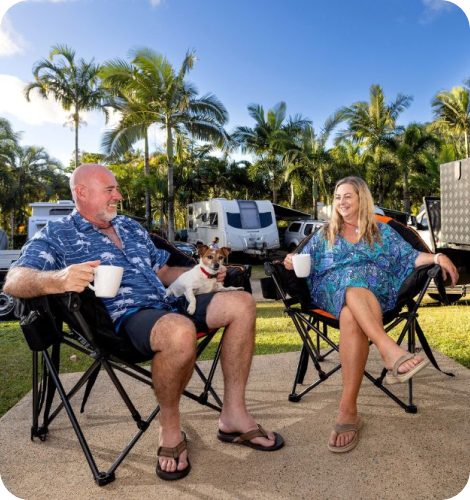
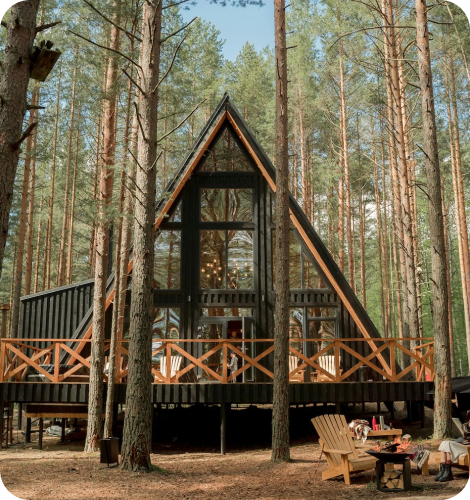
What is a good booking conversion rate for holiday parks?
While hotels might average between 2.5% and 3.5%, well-optimised holiday parks can push above 4% and even reach 5% or more. Anything below 1% suggests major issues with trust, pricing, or usability.
A realistic target for most parks is to start at 3% and then aim for 5% or higher as you refine your booking process.
Practical ways to lift your holiday park’s conversion rate
Direct strategies:

Clear book-direct incentives:
Discounted firewood, free bike hire, or flexible cancellation.

Park-ready booking engine:
Fast performance, multi-site bookings, and live pricing.

Mobile optimised:
Load times under two seconds, large tap targets, smooth date selection.

Live pricing and availability:
Rates and availability on key pages without extra clicks.

Frictionless checkout:
Guest checkout without login, autofill returning visitor details, minimal form fields.

Highlight seasonal offers:
Off-peak deals and school holiday packages.

Capture guest emails:
Build your database for future marketing.
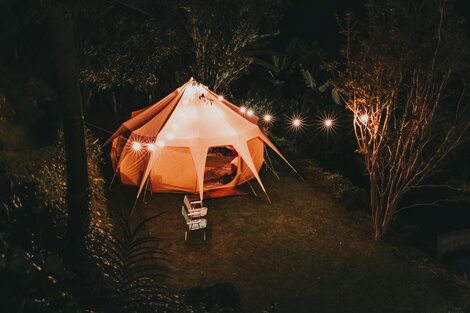
Trust-building tactics:

Show reviews with photos and ratings.

Use professional photography.

Show total cost upfront

Use genuine urgency messages

Keep website fast and navigation user friendly
Combining these with RoomStay’s park-specific booking engine builds confidence to book directly.
Keep an eye on revenue too
Track revenue per visitor, average booking value, and length of stay to ensure conversion gains match profit growth. RoomStay’s reporting and analytics help you monitor these metrics and adjust strategies in real time.
Bringing it all together
Everything from high drop-off rates to lost guest data are the problems RoomStay was built to fix. We turn frustrations into wins: more revenue, happier guests, and repeat bookings.
RoomStay brings all the essentials into one easy-to-use platform designed for holiday parks. Real-time pricing keeps rates accurate, PMS integration and flexible payment options make operations smoother, and upsell tools boost each booking’s value.
Together, these features cut booking drop-offs, increase direct reservations, and put you in control of your guest relationships. In short, RoomStay helps you:
- Increase direct bookings
- Reduce OTA commissions
- Gain and use valuable guest data for repeat business
Ready to see it in action? Book a quick demo with RoomStay and see how our park-focused tools can help you convert more visitors, keep bookings direct, and grow your repeat business.
